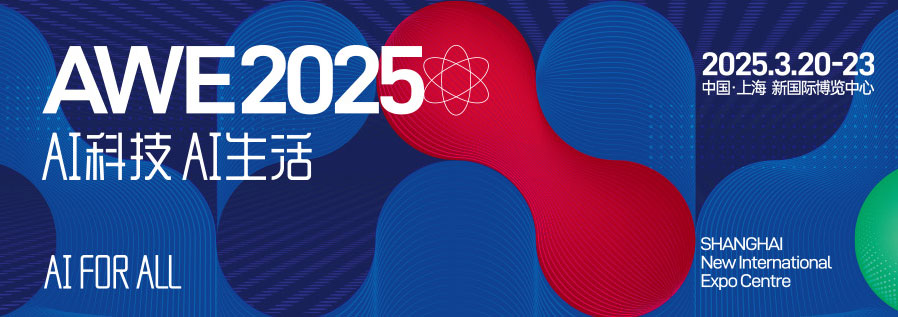Interpretation of China’s 2025 Home Appliance Consumption Trend (Part 6): The Rise of “Indulgent Consumption” — Maximizing Emotional Value
As material life reaches a high level of abundance, consumers’ mindsets when purchasing home appliances have quietly evolved. People are re-examining their lifestyles: buying home appliances is shifting from purely functional needs to emotional needs. Consumers increasingly value emotional satisfaction, improved quality of life, and enhanced happiness. Through home appliance purchases, they pursue the goal of “pleasing themselves.”
At the launch ceremony of the 2025 National Home Appliance Consumption Season on March 22, the “2025 China Home Appliance Consumption Trends White Paper” (hereinafter referred to as the White Paper) was officially released. Among its six major trends, the rise of “indulgent consumption” or “self-care consumption” stood out prominently.
Relaxation and Warm Companionship
According to the White Paper, “indulgent consumption” is essentially about caring for and delighting oneself. As indispensable products in daily life, home appliances are evolving through innovation to meet people’s emotional needs. In this sense, they are becoming new “emotional companions” that convey warmth. As seen at AWE 2025 (Appliance & Electronics World Expo), home appliances as “emotional companions” play four main roles in users’ lives: relieving stress and loneliness; relaxing body and mind; fulfilling social needs; providing cultural resonance.
As companions, home appliances have unique advantages in easing stress and loneliness. For example, a smart air conditioner that can converse intelligently is not only an “air manager” but also a warm companion in everyday life. A humanoid robot can chat, do laundry, and tidy up the house — truly a considerate domestic assistant. A smart bed paired with a sleep monitor helps users achieve high-quality rest even if they have trouble falling asleep. A multi-functional cooking appliance can turn anyone into a home chef — and a perfectly cooked steak can soothe a weary soul.

In terms of relaxation, outdoor activities such as hiking and camping remain popular in recent years, spurring the growth of small home appliances designed for outdoor scenarios. At AWE 2025, portable grills, kettles, fans, air conditioners, tea makers, and projectors enriched outdoor experiences with fun and variety.

Home appliances have also acquired a social attribute, which was evident at AWE 2025. Products such as multi-functional cookers, smart projectors, and large-screen laser TVs have become the centerpiece of home gatherings. Consumers express taste and lifestyle through home appliances, achieving social value.

Moreover, the White Paper notes that younger consumers focus more on emotional value and personalized experiences. The demand for social interaction, brand collaborations, and cultural identity is pushing home appliance brands to “break boundaries,” merging with emerging fields such as gaming, anime, ACG (animation-comic-game), and Chinese cultural trends. Consumers not only enjoy comfort through home appliances but also gain emotional and cultural resonance in the process.
Pursuing a Better Life and Enhancing Happiness
Another core of indulgent consumption is self-gratification and the pursuit of happiness, reflected in people’s desire for beauty, higher-quality living, entertainment, and a sense of ritual.
The pursuit of beauty—both personal and aesthetic—enhances happiness. For consumers, beauty manifests in body, design, and skin care. At AWE 2025, products meeting these needs—such as AI fitness mirrors, hair dryers, curling irons, smart hairbrushes, electric toothbrushes, beauty devices, epilators, beauty fridges, and mini shavers—have increasingly entered households, expanding the market rapidly.

Regarding beautiful things, the White Paper points out that well-designed home appliances often please the eye and increase purchase desire. Some products exhibit exquisite, art-like craftsmanship; others feature clever design details that delight users; some harmonize perfectly with home interiors, enhancing spatial aesthetics. These visually appealing products connect emotionally with consumers through a “first-sight philosophy,” bringing happiness and joy through visual pleasure.

Home appliances that enhance quality of life also significantly boost happiness, as seen in AWE 2025’s product displays. For instance, a washing machine that sterilizes and handles fabrics separately, or a dishwasher that frees you from chores. A high-suction, fully built-in range hood or an integrated cooking center makes cooking more enjoyable. A robot vacuum that can move objects, recognize clutter, and clean intelligently; a dual-roller floor washer that detects dirt automatically and avoids hair tangles; or a lightweight vacuum cleaner for deep cleaning — all make home cleaning effortless. Meanwhile, Bluetooth sports earphones with powerful bass, a portable camera with instant sharing, and a 4K drone that captures cinematic views all exemplify how smart devices enrich daily joy. The White Paper notes that these intelligent, hands-free appliances are winning more consumers’ hearts — they are the witnesses of a happy life.


Entertainment is also an essential part of happiness. At AWE 2025, display technologies like Mini LED, OLED, Micro LED, and laser display continued to mature. More products now feature built-in sound chips and Dolby Atmos, enhancing audiovisual experiences across TVs, projectors, PCs, VR/AR, and wearables, expanding entertainment possibilities across scenes.

The White Paper also highlights the role of ritual in daily happiness — using appliances to create meaningful moments. At AWE 2025, an automatic coffee machine offered the aroma of happiness in every cup. A tea brewer steeped tea at perfect temperatures for relaxing afternoon breaks. During festive occasions, various kitchen appliances enabled family cooking experiences and shared joy. A cute multi-pot stew cooker made dining feel ceremonial. These appliances, which enrich special and meaningful moments, are embraced by consumers as enhancers of happy living.

In short, home appliances are no longer mere tools — they have become carriers of emotional connection, self-expression, and a sense of life control. For brands, the future lies not only in selling products but in delivering scenario-based solutions and emotional resonance. Only then can they truly capture the opportunities of the “indulgent economy.”

